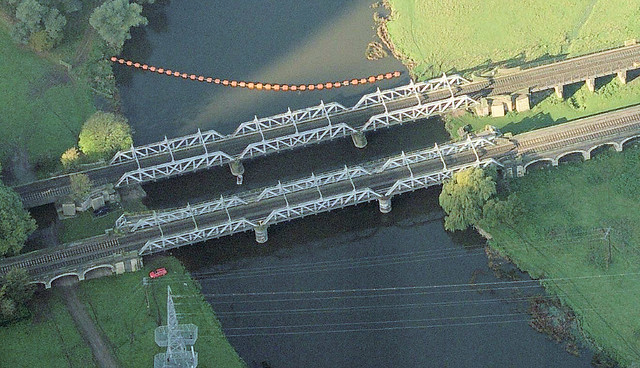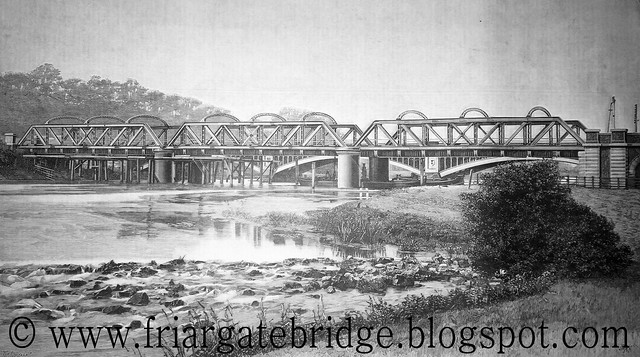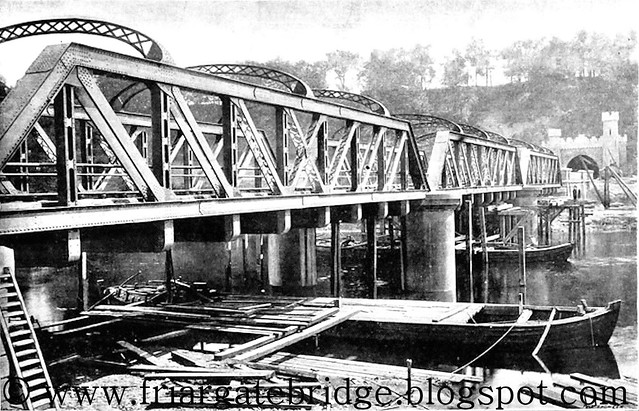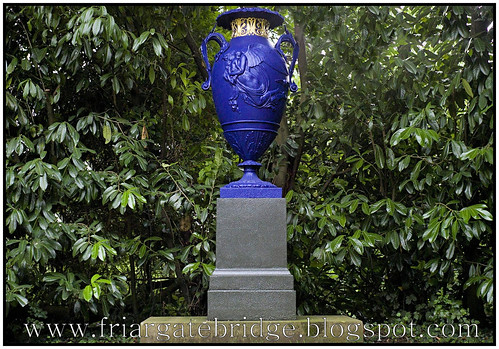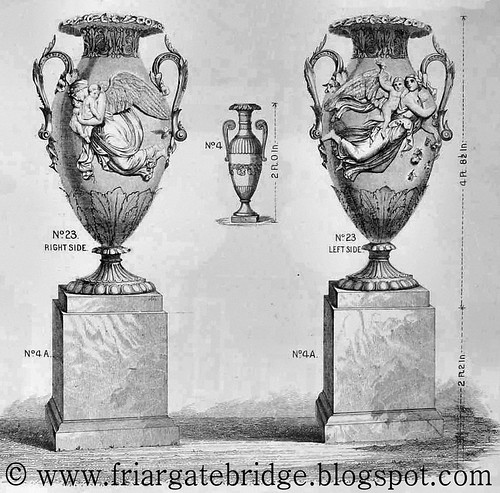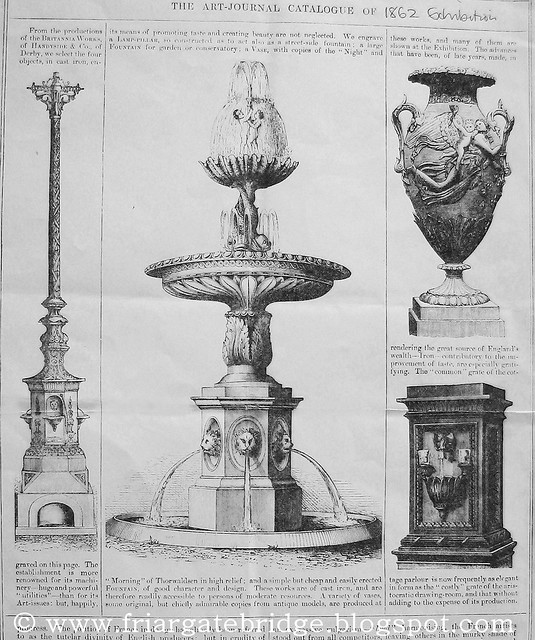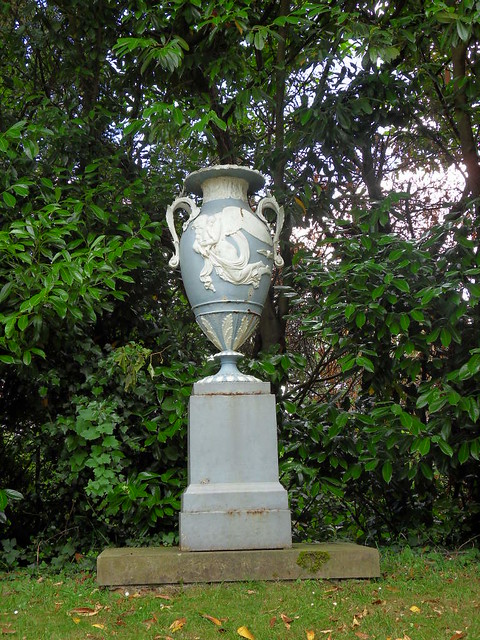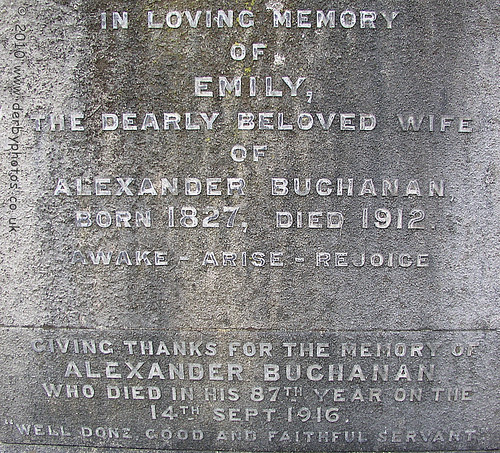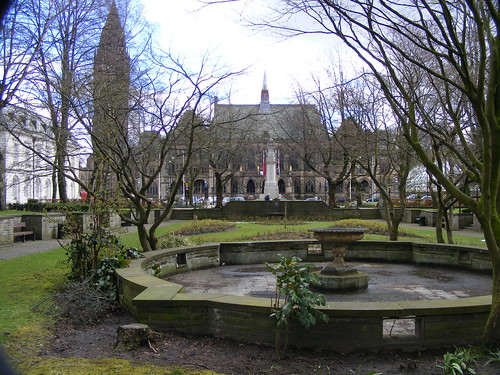In Manchester are two such bridges located right next to each other. This blog post is about Barton Swing Aqueduct.
On 27th June 2015 I made a special journey to go and see one of Andrew Handyside's movable bridges. I have been wanting to see this bridge for many years so it was such a thrill to finally see it in real life. I arrived at the bridge from the canal path from Ashburton Road West. Its really strange seeing the entire canal suspended in mid air. There were no signs of any water leaks around the iron trough. Its amazing to think that this bridge was made in Derby 121 years ago and its still being used.
Barton Swing Aqueduct is a moveable navigable aqueduct in Barton upon Irwell, Greater Manchester. It carries the Bridgewater Canal across the Manchester Ship Canal.
The swinging action allows large vessels using the ship canal to pass underneath and smaller narrowboats to cross over the top. The aqueduct, the first and only swing aqueduct in the world, is a Grade II* listed building, considered a major feat of Victorian civil engineering.
Designed by Sir Edward Leader Williams and built by Andrew Handyside and Company of Derby, the swing bridge opened in 1894 and remains in regular use today.
Aerial views showing Barton Swing Aqueduct and Barton swing road bridge.
 |
| Barton Swing Aqueduct in the closed position. |
 |
| Barton Swing Aqueduct in the open position. |
The aqueduct is a form of swing bridge. When closed, it allows canal traffic to pass along the Bridgewater Canal. When large vessels need to pass along the ship canal underneath, the 1,450-tonne 330-foot long iron trough is rotated 90 degrees on a pivot mounted on a small purpose-built island.
Gates at each end of the trough retain around 800 tonnes of water; additional gates on each bank retain water in their adjacent stretches of canal.
My Photographs of Barton Swing Aqueduct taken June 2015 :
 |
| Barton Swing Aqueduct over the Manchester Ship canal. |
 |
| The Bridgewater Canal as it flows over Barton swing aqueduct. |
 |
| Here you can see Barton Swing road bridge further down stream |
 |
| A view looking up at Barton Swing Aqueduct. |
 |
| Side view of Barton Swing Aqueduct with a narrow Boat passing over it. This photograph taken from Barton Swing Road Bridge. |
The turning mechanism built into the central island consists of a 27-foot (8.2 m) race plate embedded in granite blocks. Sixty-four tapered cast iron rollers sit on top of the race plate, held in position by a spider ring. On top of that an upper race plate supports the aqueduct and its circular gear rack, which was powered by a hydraulic engine manufactured by Sir W. G. Armstrong Mitchell of Newcastle.
Hydraulic power was originally supplied by steam from two Lancashire boilers housed in a pumping station on the Eccles bank of the ship canal; a service culvert beneath the bed of the canal conveyed the water under pressure to the control tower on the island.
In 1939 the original hydraulic engines were replaced by a pair of radial three-cylinder engines manufactured by the Hydraulic Engineering Company of Chester, and the following year a power house was built on the island to house two electrically driven pumps. The old steam pumping station was demolished after the Second World War.
 |
| The turning mechanism built into the central island. You can just about make out the Andrew Handyside logo on the left drum. |
 |
| The central island |
Here is a photograph of the original stone Barton Aqueduct built in 1761, This was demolished in 1893 to make way for the one we see today.
Videos of this Barton Swing Aqueduct :
Here is a time-lapse video of me walking along the canal path to Barton Swing Aqueduct Starting at Ashburton Road West (B5214).
Narrow Boat "Victoria" crosses the Barton Swing Aqueduct which allows the Bridgewater Canal to cross the Manchester Ship Canal.
The view from another Narrow boat going through Barton Swing Aqueduct.
The view from a Kayak going through Barton Swing Aqueduct.
Video showing the operation of Barton Swing Aqueduct as a Narrow boat uses it.
Here is a video showing the aqueduct from various angles :
Barton swing aqueduct.
Here is a Google Streetview of the bridge as seen from the road bridge:
Streetview of Barton Swing Aqueduct.
Can you help find more Handyside stuff ?
If anyone out there knows of any other bridges around the world bearing the Handyside badge that I have not mentioned yet then please get in touch with details, location, photographs etc.
My next blog post will be about the next movable bridge which is right next to this one !
Thanks
Andy

